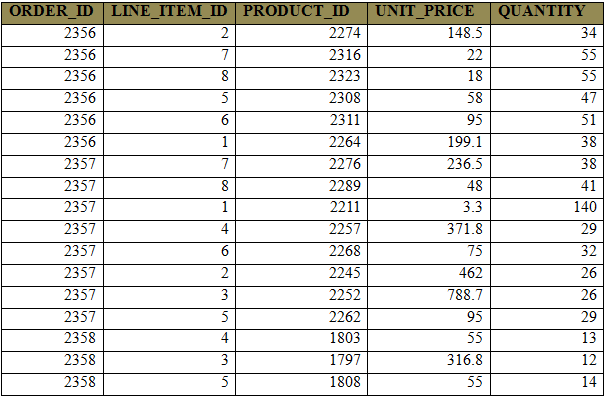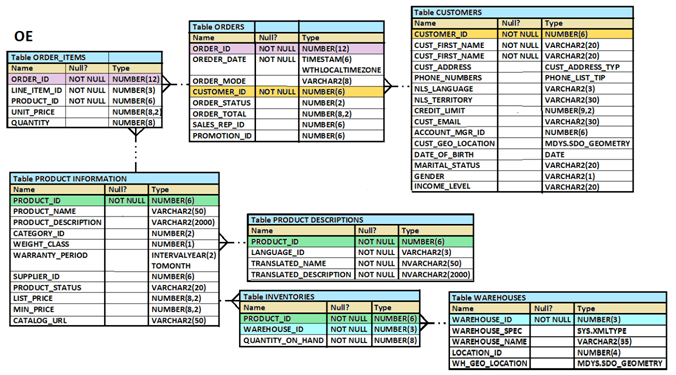Question: 1
View the Exhibit and examine the details of the ORDER_ITEMS table.

Evaluate the following SQL statements:
Statement 1:
SELECT MAX(unit_price*quantity) ''Maximum Order''
FROM order_items;
Statement 2:
SELECT MAX(unit_price*quantity) ''Maximum Order''
FROM order_items
GROUP BY order_id;
Which statements are true regarding the output of these SQL statements? (Choose all that apply.)
Question: 2
Which two statements are true regarding subqueries? (Choose two.)
Question: 3
Examine the description of the EMP_DETAILS table given below:

Which two statements are true regarding SQL statements that can be executed on the EMP_DETAIL TABLE?
Question: 4
View the Exhibit and examine the structure of ORDER_ITEMS and ORDERS tables.

You need to remove from the ORDER_ITEMS table those rows that have an order status of 0 or 1 in the ORDERS table.
Which two DELETE statements are valid (Choose two.)
Question: 5
The PRODUCTS table has the following structure.

Evaluate the following two SQL statements:
SQL>SELECT prod_id, NVL2 (prod_expiry_date, prod_expiry_date + 15, ' ') FROM products;
SQL>SELECT prod_id, NVL (prod_expiry_date, prod_expiry_date + 15) FROM products;
Which statement is true regarding the outcome?